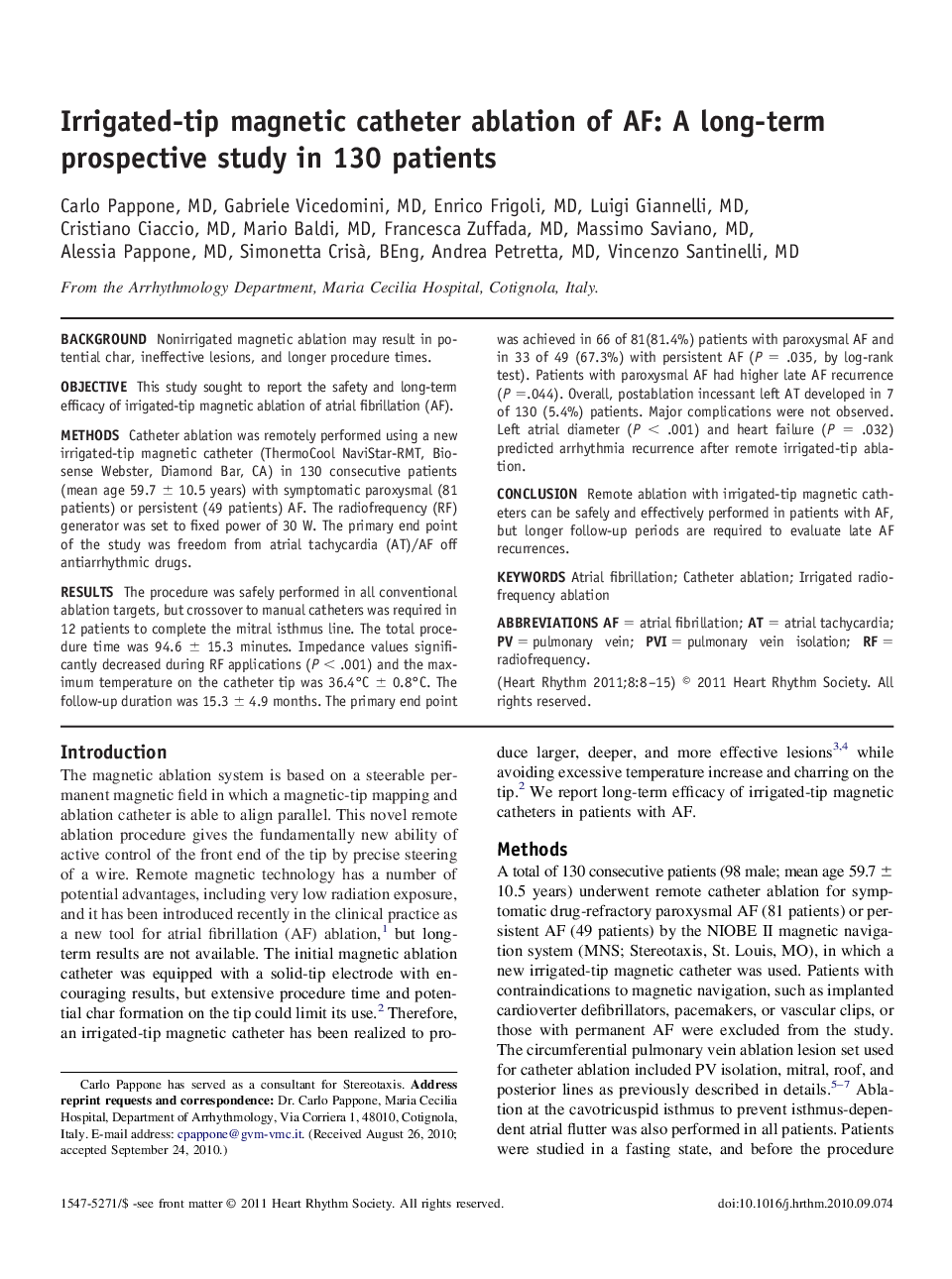| کد مقاله | کد نشریه | سال انتشار | مقاله انگلیسی | نسخه تمام متن |
|---|---|---|---|---|
| 2923823 | 1175887 | 2011 | 8 صفحه PDF | دانلود رایگان |

BackgroundNonirrigated magnetic ablation may result in potential char, ineffective lesions, and longer procedure times.ObjectiveThis study sought to report the safety and long-term efficacy of irrigated-tip magnetic ablation of atrial fibrillation (AF).MethodsCatheter ablation was remotely performed using a new irrigated-tip magnetic catheter (ThermoCool NaviStar-RMT, Biosense Webster, Diamond Bar, CA) in 130 consecutive patients (mean age 59.7 ± 10.5 years) with symptomatic paroxysmal (81 patients) or persistent (49 patients) AF. The radiofrequency (RF) generator was set to fixed power of 30 W. The primary end point of the study was freedom from atrial tachycardia (AT)/AF off antiarrhythmic drugs.ResultsThe procedure was safely performed in all conventional ablation targets, but crossover to manual catheters was required in 12 patients to complete the mitral isthmus line. The total procedure time was 94.6 ± 15.3 minutes. Impedance values significantly decreased during RF applications (P < .001) and the maximum temperature on the catheter tip was 36.4°C ± 0.8°C. The follow-up duration was 15.3 ± 4.9 months. The primary end point was achieved in 66 of 81(81.4%) patients with paroxysmal AF and in 33 of 49 (67.3%) with persistent AF (P = .035, by log-rank test). Patients with paroxysmal AF had higher late AF recurrence (P =.044). Overall, postablation incessant left AT developed in 7 of 130 (5.4%) patients. Major complications were not observed. Left atrial diameter (P < .001) and heart failure (P = .032) predicted arrhythmia recurrence after remote irrigated-tip ablation.ConclusionRemote ablation with irrigated-tip magnetic catheters can be safely and effectively performed in patients with AF, but longer follow-up periods are required to evaluate late AF recurrences.
Journal: Heart Rhythm - Volume 8, Issue 1, January 2011, Pages 8–15